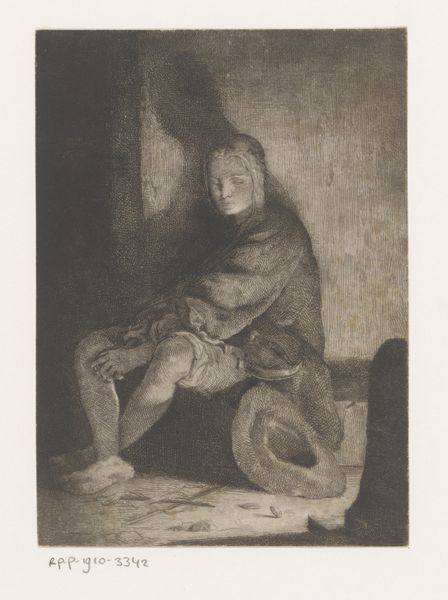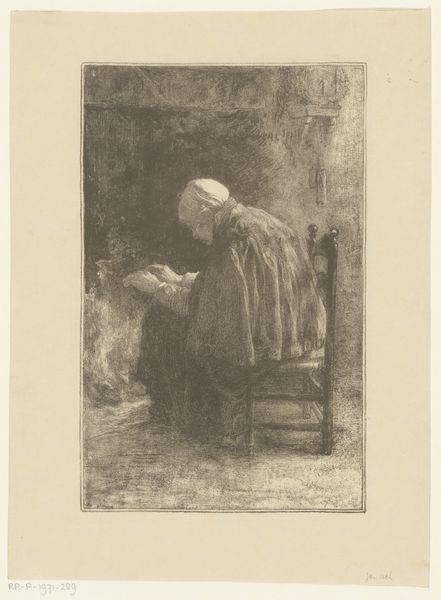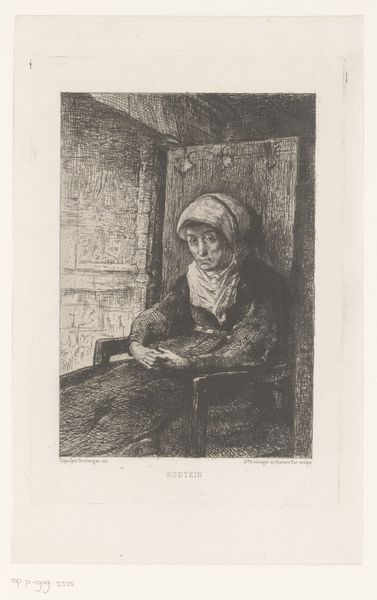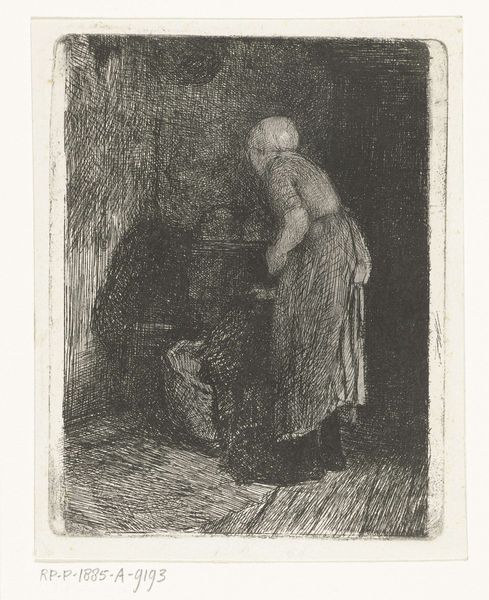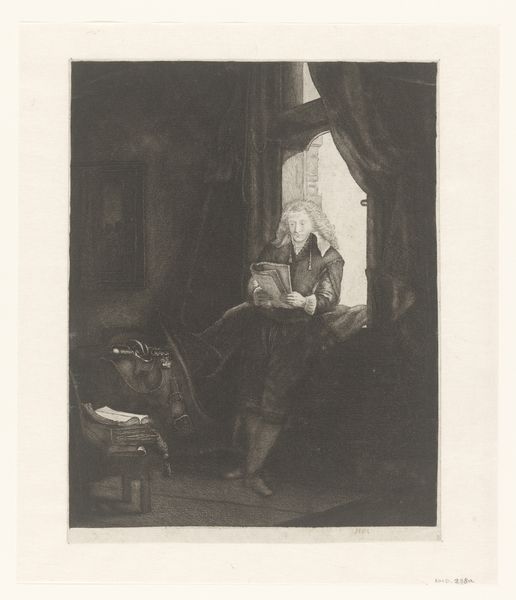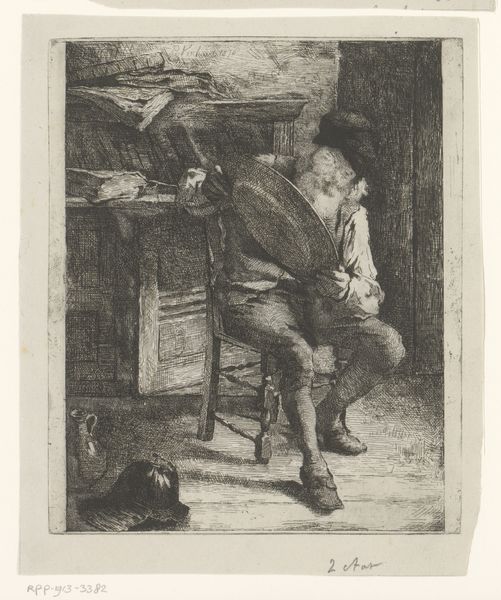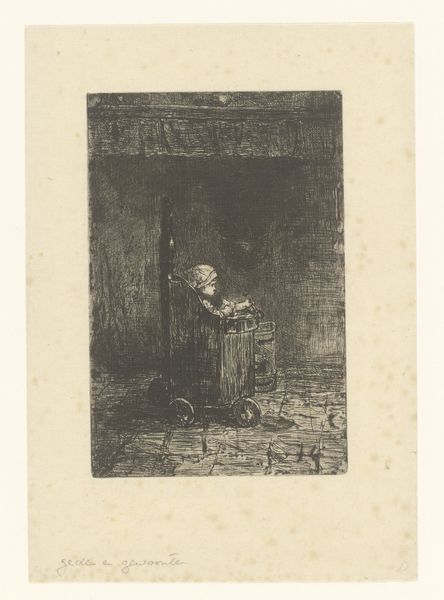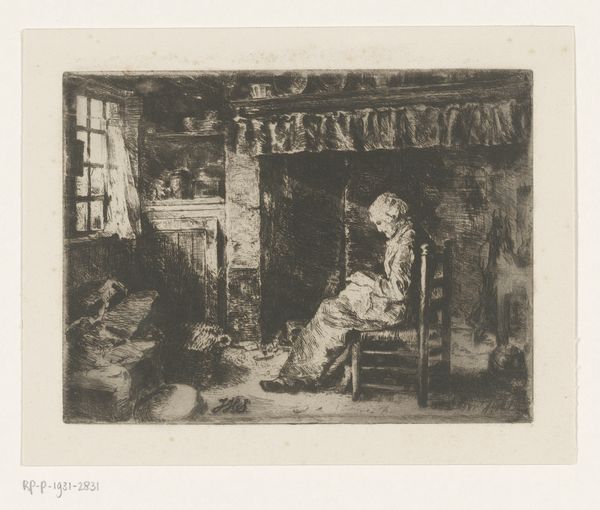
print, etching
# print
#
etching
#
figuration
#
intimism
#
genre-painting
#
realism
Dimensions: height 219 mm, width 171 mm
Copyright: Rijks Museum: Open Domain
Curator: This print, housed here at the Rijksmuseum, is called "Vrouw wast een kind", or "Woman Washing a Child." It's an etching by Philip Zilcken, dating from between 1867 and 1890. Editor: There's such tenderness radiating from this small, dark world! It’s the soft glow on the baby that captivates me. Curator: The scene, though intimate, speaks volumes about labor. Consider the materials: Zilcken used etching, a printmaking process reliant on acid and metal, to depict this everyday act of domesticity. This immediately places "high art" production techniques within a framework of common labor, disrupting established hierarchies. Editor: I like how the humble scene glows—it really does celebrate this private, domestic world. The texture of the print itself gives everything a lived-in, almost comforting grit. Curator: And note the artist’s deliberate choice to depict the mother in the center; the lighting around her highlights not only her labor but her position at the core of the domestic economy. See how the darkness threatens to envelop the edges, with only this space of care illuminated by light? Editor: You are right, and it does that beautifully, there's so much emotion evoked from the intimacy captured here. I find that Zilcken elevates it above mere record, somehow. It feels sacred. Curator: Perhaps because we, the viewers, also participate in the act of domestic care, making it personal. And it underscores how intimate genre paintings depicting ordinary lives offer a pathway to engage with labor and materiality on a relatable, personal scale. Editor: This simple image echoes across time. Even today, seeing that image of a parent looking tenderly at their child stirs something primal within. Curator: A lot to unpack here. It's a testament to art's capacity to bridge eras by bringing quotidian experiences to light through thoughtful creation. Editor: Absolutely. What started as a quick glimpse into domestic life opened up quite a view, didn't it?
Comments
No comments
Be the first to comment and join the conversation on the ultimate creative platform.
